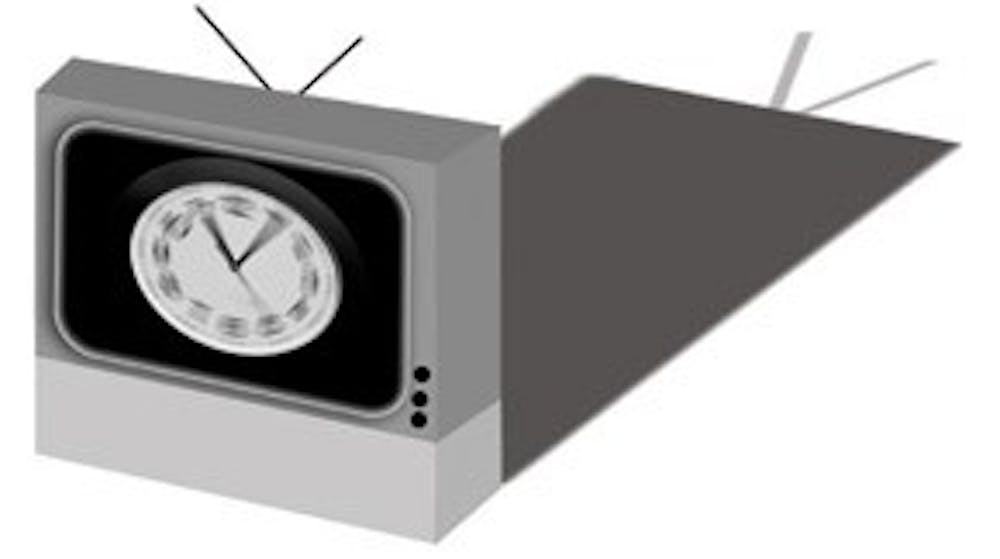Salami can be used as rocket fuel. This is the most memorable thing I took away from my Saturday morning, afternoon and evening of what could only be described as a small-screen stupor.\nThe average American watches about four hours of television per day, according to Nielson Media Research. That's 28 hours per week, or 2 months of television-watching each year. To examine the effects of this pseudo-obsession, I was challenged to watch television for 24 straight hours. No sleeping and no leaving except for bathroom breaks and meals. I descended into the windowless cave of my childhood bedroom in Terre Haute and set out to watch television for an entire day, 9:30 a.m. Saturday to 9:30 a.m. Sunday. \nIn the interest of full disclosure, let me admit that I didn't make it. Twelve hours was plenty for me, and I fell asleep for about 2 of those 12 hours, embarrassingly similar to a turkey-filled uncle on Thanksgiving dozing in front of the Cowboys-Jets game. But it wasn't exhaustion that drove me to snooze. It wasn't even boredom. It was an escape, a way of doing something different from staring at the assault of flickering images, listening to "witty" banter and drolling laugh tracks. Under different circumstances, I could have just switched off the tube, walked outside and found something different to do -- displaced the medium with a different activity.\nMedia displacement is something assistant professor Julia Fox sees when she asks the students in her telecommunications classes to keep a diary of their media consumption, then challenges them to give up for 24 hours one of their top three most-used media -- whether that be television, a cell phone or an iPod.\n"It's amazing what students will go through to avoid being alone with their own thoughts," Fox said. \nShe added that sometimes students will displace one form of media with another. For example, a person who gives up use of their iPod during the challenge might spend more time on the Internet.\nIn her own research, Fox studies how people process and remember media messages, particularly television news messages. Through IU's Institute for Communication Research, she studies this by monitoring subjects' physiological responses to media messages.\n"There are a number of structural and content features that put people in approach or avoid mode (to what they're watching)," Fox said. \nIn my unprofessional ascertainment, I would say that I responded to most of what I watched with an avoidant feeling. I watched hundreds of commercials and promos, which advertised everything from other television shows to clothing, from window blinds to knife sharpeners. I watched makeover shows, detective dramas, tween comedies, movies and documentary programs. And I hated all of it. What I had previously considered a mindless leisure activity became a brain-draining chore.\nDuring the 12 hours I spent in front of the television, I was thinking of all the other things I could be doing -- spending time with friends, reading a book, being outside, listening to music. Anything but watching television.\nPerhaps part of this aversion I felt toward television resulted from the fact that my age group watches less television than any other age group. This is simply because college students are busy, Fox said. When they're not in class or studying, college students have such a large social network that watching the "boob tube" is not the top activity on their agendas.\nCollege students also differ from other age groups in how they process information from media messages. One example of this comes from a study conducted by Annie Lang, associate dean for research in the Department of Telecommunications, who has been conducting research for 20 years about how people process and learn from television.\nOne study Lang did looked at how college students versus people over 45 remembered things from messages that were fast-paced (think MTV's visual assault) and slower-paced (think documentary-type programs). Surprisingly, the study found that people over 45 and college students had the same ability to remember information from the fast-paced production, but college students were awful at remembering the slow-paced material.\nLang said this could point to college students' inability to focus attention -- a factor that I can attest to from my limited, 12-hour experience of nonstop television intake. No matter what I was watching, I was thinking about something else. Without concern or interest in what I was watching, I felt like an empty vessel -- a drooling, passive bump-on-a-log of a person. The pictures and noises washed over my brain and dripped out the ends of my hair, leaving me feeling nothing but boredom and anger at the wasted day.\nWhat made me fold after only 12 hours -- half the time I was supposed to dedicate to the slothification of my self -- was the sinking feeling of what I'd missed during my day of television. If the 12 hours of wasted time made me feel so out of the loop and brain-drained, think about the purported two months of television time the average American watches each year.
Mission: Un-accomplished
24 hours of 'boob tube' entertainment turns into an aborted project halfway through

Get stories like this in your inbox
Subscribe





